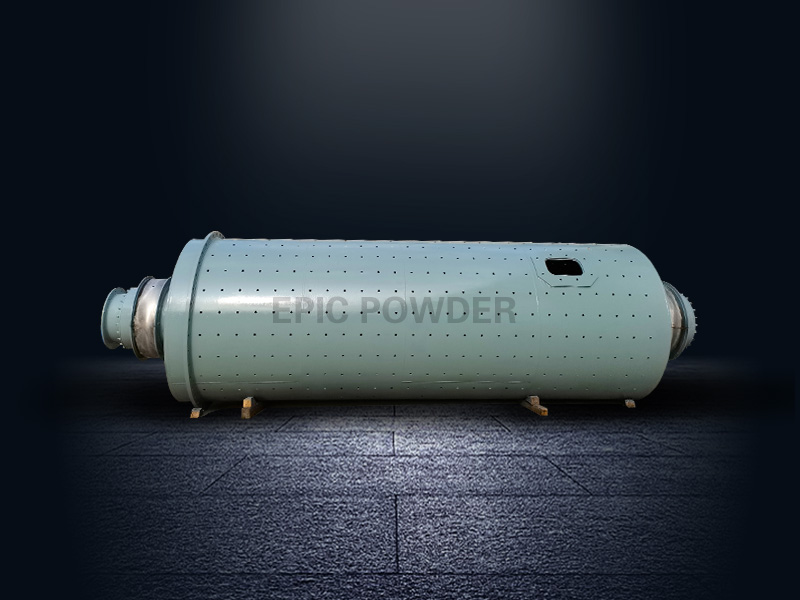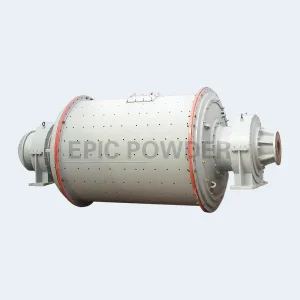Ball mill is a grinding device that turns material into fine powder. Ball mills are cylindrical and often the grinder of choice when mashing paints, ores, ceramic materials, and certain hard chemicals. A ball mill can effectively convert a hard material into a loose powder by rotating on a horizontal axis.

Definition and Working Principle of ball mill
As mentioned earlier, a ball mill is a grinder used to grind or blend materials for mineral dressing processes, paints, pyrotechnics, ceramics, and selective laser sintering. It works on the principle of impact and attrition: size reduction is done by impact as the balls drop from near the top of the shell. A ball mill consists of a hollow cylindrical shell rotating about its axis. The axis of the shell may be either horizontal or at a small angle to the horizontal. It is partially filled with balls. The grinding media are the balls, which may be made of steel, stainless steel, ceramic, or rubber. The inner surface of the cylindrical shell is usually lined with an abrasion-resistant material such as manganese steel or rubber. The balls occupy about 30 to 50 percent of the volume of the ball milling.
Advantages of ball mill
- Suitable for both wet and dry grinding processes: The ball milling can perform dry grinding or wet grinding depending on the properties of the material being processed.
- High production capacity and continuous operation: With the ability to grind multiple materials, the ball millingcan output a continuous stream of powdered material.
- Low energy consumption: The ball milling consumes less energy during operation due to the rotating motion of the grinding media.
- Versatility in grinding materials: The ball milling can grind various materials, including cement, pyrotechnics, ceramics, and selective laser sintering.
- Easy maintenance and operation: The ball milling requires minimal maintenance and is easy to operate, making it suitable for experienced and inexperienced operators.
Disadvantages of ball milling
- High equipment cost: The initial investment for a ball milling is relatively high, especially for larger mills with higher capacity. This can make it challenging for small-scale production or those with limited financial resources.
- Not suitable for ultra-fine grinding: The final particle size achievable with a ball mill is limited, making it unsuitable for ultra-fine grinding applications.
- Noise and vibration: During operation, the ball milling can generate noise and vibration, which can be a nuisance in certain environments.
- Risk of over-grinding: Over-grinding can produce fines that are too small for the desired application, wasting energy and reducing the overall efficiency of the grinding process.
Applications of ball mill
- Cement industry: The ball mill is commonly used for grinding cement clinker and gypsum to produce cement.
- Mineral processing: The ball milling is widely used in ore processing plants to grind various ores and other materials.
- Ceramic industry: The ball milling grinds different ceramic materials, such as clay, quartz, and feldspar.
- Pharmaceutical industry: The ball milling grinds and mixes pharmaceutical products for drug formulation.
- Paint and coating industry: The ball mill grinds and disperses pigments in paint and coating production.
In conclusion, a ball mill is a versatile and efficient grinding device used in various industries. It offers numerous advantages, including its suitability for wet and dry grinding, high production capacity, low energy consumption, and ease of maintenance and operation. However, it also has disadvantages, such as high equipment cost, limited particle size reduction, and the potential for noise and vibration. Despite these drawbacks, the ball milling remains popular for many grinding applications in various industries.

